How Israel slaughtered the Butcher: Rookie soldiers stumbled across Hamas leader Yahya Sinwar, engaged in gun battle, tracked him down as he cowered in empty building… then blasted it with a tank
Yahya Sinwar, architect of the October 7 massacre and Israel’s most wanted man, was killed Wednesday after more than a year of being hunted by the intelligence services and the Israeli army.
Ultimately, his killing was apparently accidental, with the group of trainee soldiers responsible for the Hamas chief’s death unaware of his true identity at the time, reports indicate.
Israeli officials have said the 61-year-old – long dubbed the Butcher of Khan Younis – was killed after emerging from the underground tunnel network where he had been hiding.
A unit of the IDF’s 828th Bislamach Brigade was patrolling in Tal al-Sultan, an area of Rafah, on Wednesday morning when it encountered a group of three Hamas fighters on the street and engaged them in a firefight.
The terrorists were “on the run” and moved from house to house, the IDF said, and became split up.
One of them, since identified as Sinwar, “ran into one of the buildings alone.” He went to the second floor and troops responded by firing a tank shell in his direction.
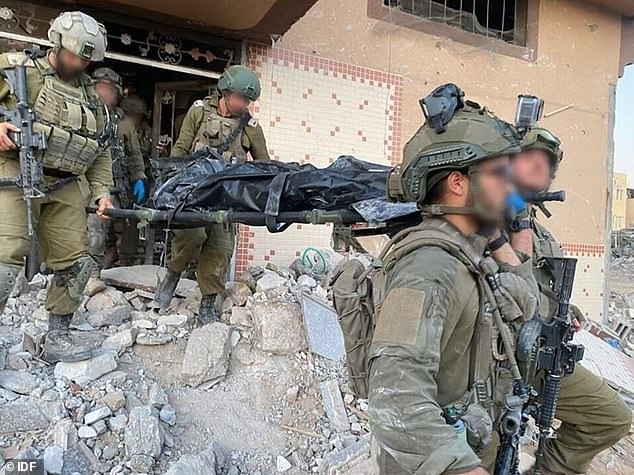
IDF soldiers carry Sinwar’s body on a stretcher from the destroyed building
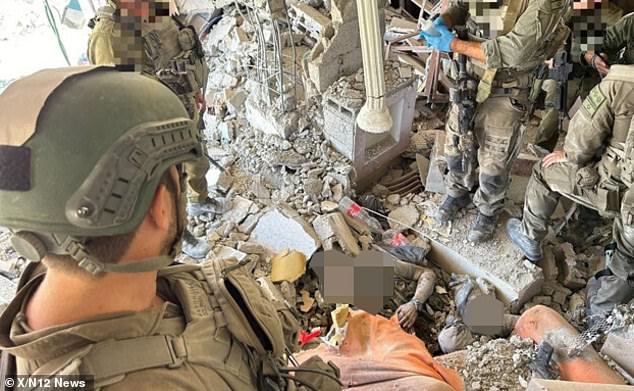
Israeli soldiers are pictured surrounding a corpse resembling Hamas leader Yahya Sinwar
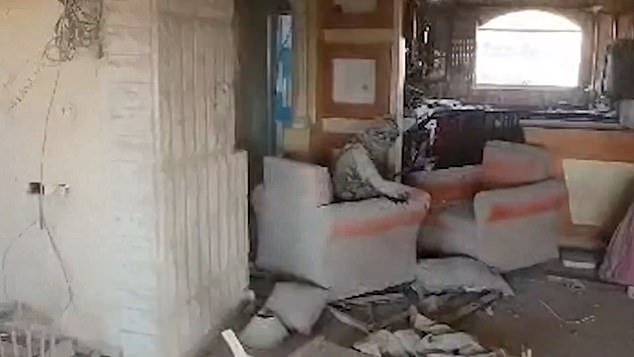
Sinwar can be seen looking directly at the drone, only through the small hole in the packaging that envelops his face, while his right hand is wounded by bullets.
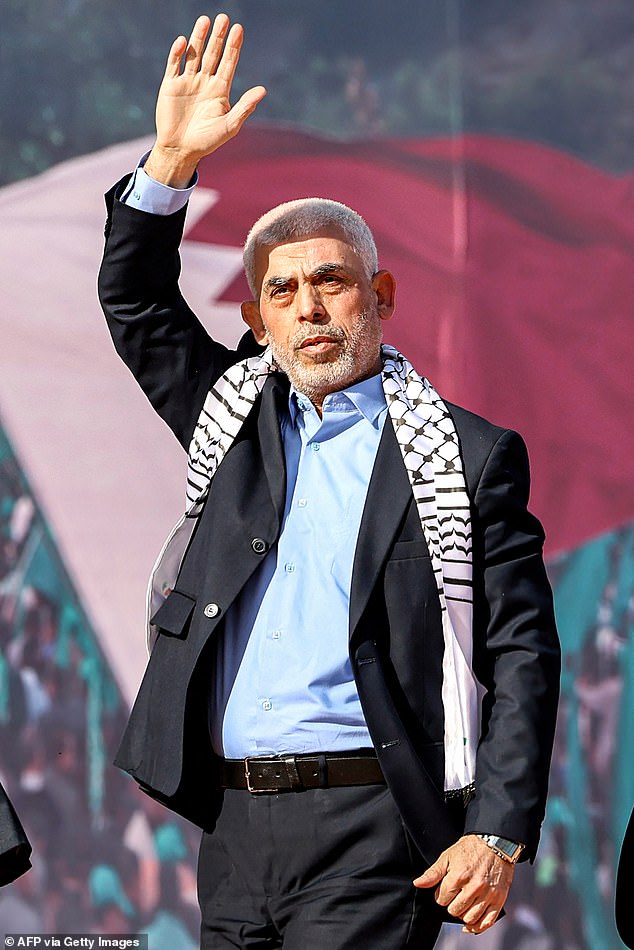
Israel accuses Sinwar (pictured) of masterminding unprecedented October 7 attack on Israel that sparked war
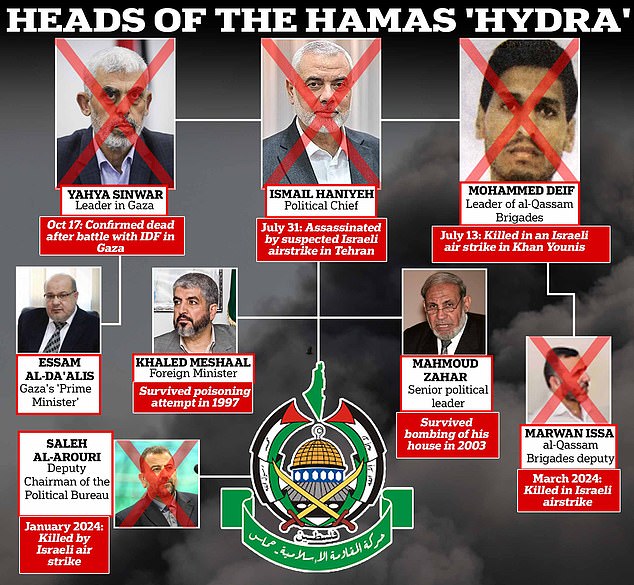
According to Israeli media, the unit, consisting of infantry commanders and reservists in training, then began searching the area.
Two grenades were thrown at them, one of which exploded while the other did not. Ynet reports.
The troops decided it was too dangerous to continue and withdrew. Instead, they sent a mini-drone to track the fleeing fighter.
Dramatic images released by the IDF show the bloodied Sinwar, his face hidden by a scarf, throws a stick in a last-ditch effort to defend himself from the drone, just seconds before he was killed.
Two 120mm tank shells struck the building, as did a surface-to-surface Matador rocket, according to Israeli reports, sending shrapnel flying over the upper floors and killing Sinwar.
Unaware that they had eliminated Israel’s main target, the soldiers did not return to the site until Thursday morning, when soldiers from the 450th Infantry Battalion were sent to take a closer look.
As they inspected the dead, they realized one bore a striking resemblance to the Hamas leader.
Graphic images emerged of his corpse lying on the rubble surrounded by Israeli soldiers, while close-ups showed a catastrophic head wound and multiple wounds.
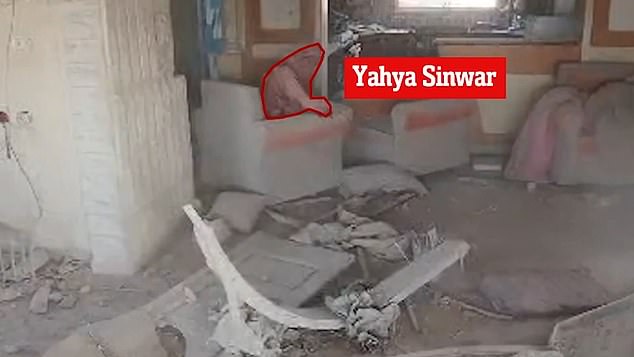
This is the terrifying moment visibly bloodied Hamas leader Yahya Sinwar was identified as a terrorist by an IDF drone, just seconds before he was killed by Israeli forces in Gaza
He was found with a gun, a body armor and 40,000 shekels (£8,250).
“Yahya Sinouar had a lot of cash and fake passports with him, he was ready to flee,” Israeli army spokesman Colonel Olivier Rafowicz told French newspaper CNEWS this morning.
He claimed that the items Sinwar was carrying, which reportedly included a map from UNRWA, the UN relief agency for Palestinian refugees, “could show that he was prepared to flee and leave Gaza and its men behind.”
Body traps in the area forced the corpse to remain in place, but part of one of its fingers was removed and sent for examination.
Confirmation of his death took several hours, multiple tests were performed and his identity was finally confirmed with dental records and fingerprints.
Four hours after confirming it was investigating whether the Hamas leader had been killed, the military published a simple message on social media: “Eliminated: Yahya Sinwar.”
Photos show Israeli troops carrying a body, believed to be Sinwar’s, out of the destroyed building on a stretcher.
Later on Thursday, his body was taken to a laboratory in Israel’s commercial hub Tel Aviv.
Initial findings described Sinwar’s physical condition as “good, even though he had spent a long time in tunnels,” Kan public broadcaster reported.
Hamas itself has not commented, but sources within the group have said that evidence they have seen indicates that Sinwar was indeed killed by Israeli forces.
“The dozens of operations carried out by the IDF and the ISA over the past year, and in recent weeks in the area where he was eliminated, restricted Yahya Sinwar’s operational movement while he was pursued by military forces and led to his elimination,” the spokesperson said. The Israeli army reported this in a statement.
Sinwar has been a prime target for Israeli forces since October 7, but Israel is said to be reluctant to carry out an assassination attempt, amid reports that he was surrounded by Israeli hostages and carrying a bag full of explosives.
It is believed that Sinwar has been moving from one place to another without the hostages since late August, when six abductees – Carmel Gat, Hirsch Goldberg-Poulin, Alex Lubnov, Almog Sarosi, Uri Danino and the late Aden Yerushalmi – were found dead. in a tunnel, according to a new report from N12.
Israeli forces reported no sign of hostages at the site where he was killed.
Israel previously said it was conducting dental and DNA tests to determine whether Sinwar was among the strike victims.
The Israeli police told the newspaper BBC that Sinwar’s body was identified through dental records and fingerprints.
Sinwar was imprisoned in Israel for 22 years, meaning his genetic information was in the file.
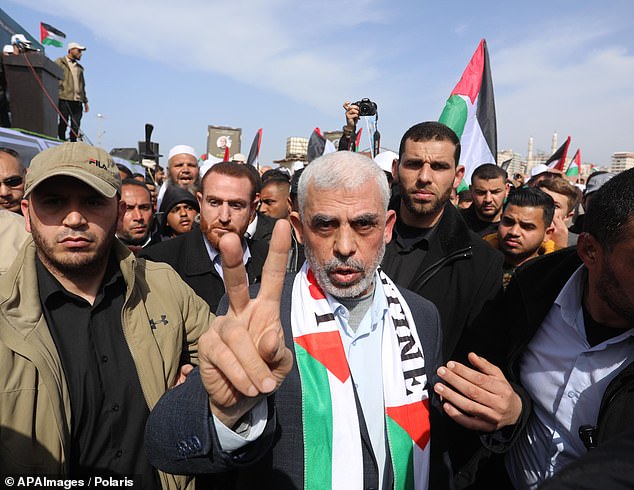
Hamas leader Yahya Sinwar has remained elusive throughout the years of war (pictured in 2022)
IDF spokesman Admiral Daniel Hagari confirmed the death of the Hamas leader in a televised statement last night.
“Sinwar was responsible for the most brutal attack on Israel in our history when terrorists from Gaza invaded Israel, slaughtered Israelis in their homes, raped our women, burned entire families alive and took 250 men, women and children, babies, hostage to Gaza.
“For the past year, Sinwar tried to escape justice. He failed. We said we would find him and bring him to justice, and we did.
“It was Yahya Sinwar who decided to go to war with Israel while hiding behind civilians in Gaza.”

IDF spokesman Admiral Daniel Hagari confirmed the death of the Hamas leader, adding: ‘Sinwar was responsible for the most brutal attack on Israel in our history’
He added that 101 hostages remain in captivity under “cruel conditions.”
The Israeli Foreign Minister also confirmed the news on Thursday.
“Mass murderer Yahya Sinwar, who was responsible for the October 7 massacre and atrocities, was killed today by IDF soldiers,” Israel Katz said in a statement.
He said Sinwar’s death was “a great military and moral achievement for Israel,” adding that his death opens the possibility for the “immediate release of the hostages” and change “that will lead to a new reality in Gaza ‘ without Hamas or Iranian. control’.
Sinwar was born in 1962 in the Khan Younis refugee camp in Gaza and joined Hamas shortly after its founding in the 1980s.
He devoted himself to its radical Islamist ideology, which seeks to establish an Islamic state in historic Palestine and opposes the existence of Israel.
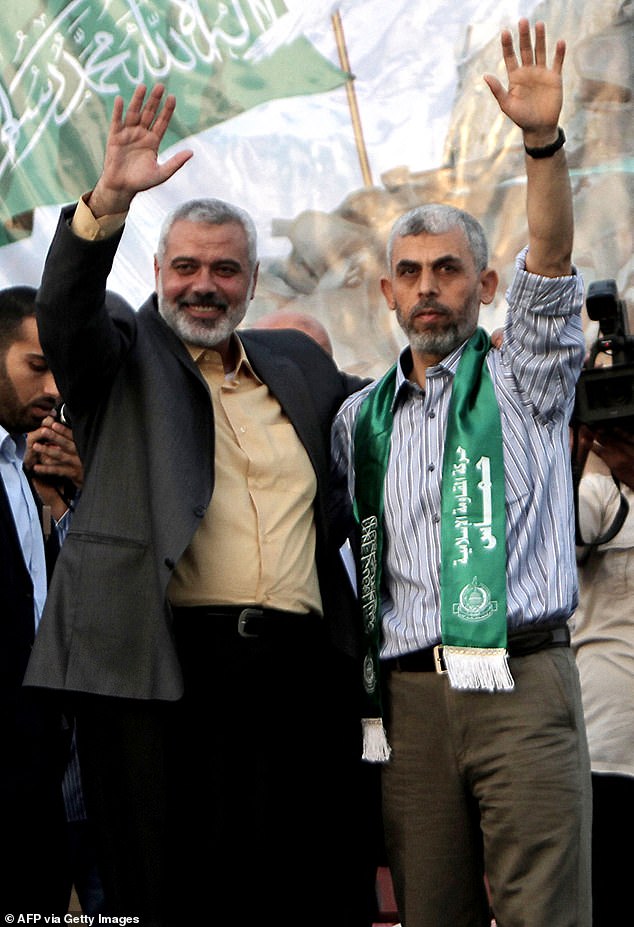
Sinwar became the new leader of the Iran-backed Palestinian group after the assassination of former political leader Ismail Haniyeh (left) in July
He became the protégé of Sheikh Ahmed Yassin, the founder of Hamas, as a young man and was first arrested by Israel in 1982 while a student at the Islamic University in Gaza.
In prison he acquired a fearsome reputation as a ruthless enforcer, killing suspected Israeli collaborators, and was nicknamed the Butcher of Khan Younis.
He learned Hebrew during his brutal 22-year prison sentence for masterminding the kidnapping and murder of two Israeli soldiers and four Palestinians.
He emerged from prison as a street hero in Gaza and quickly rose to the top of the Hamas ranks.
Hamas has not confirmed the death of its leader. It will have dealt a huge blow to the organization, which was already weakened by the assassination of its top military commander in July.
Experts say the group may wait a while before acknowledging his death, while his body remains with the Israeli army.
His assassination so soon after the death of his predecessor, Ismail Haniyeh, in July now raises the question of who could succeed him.
